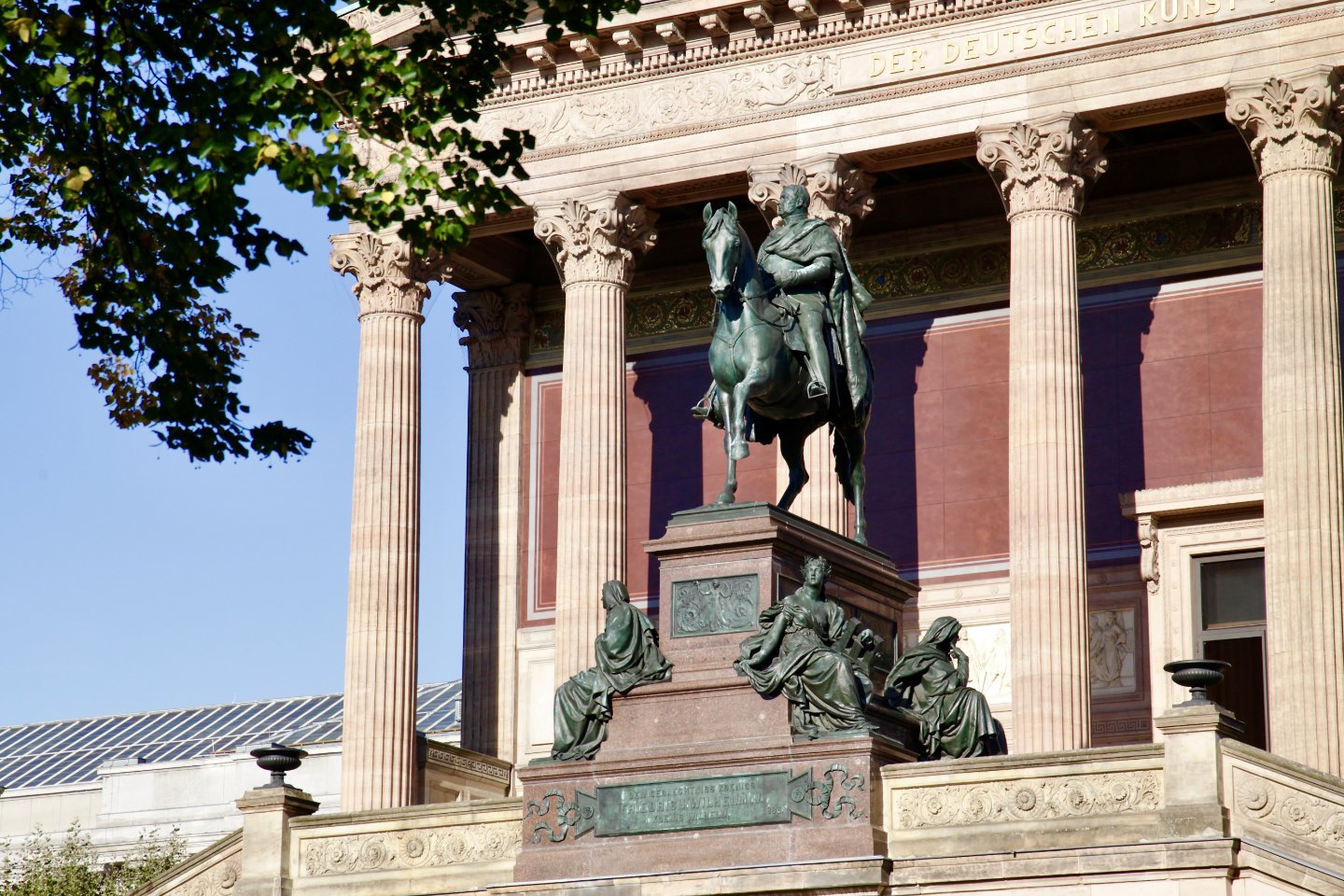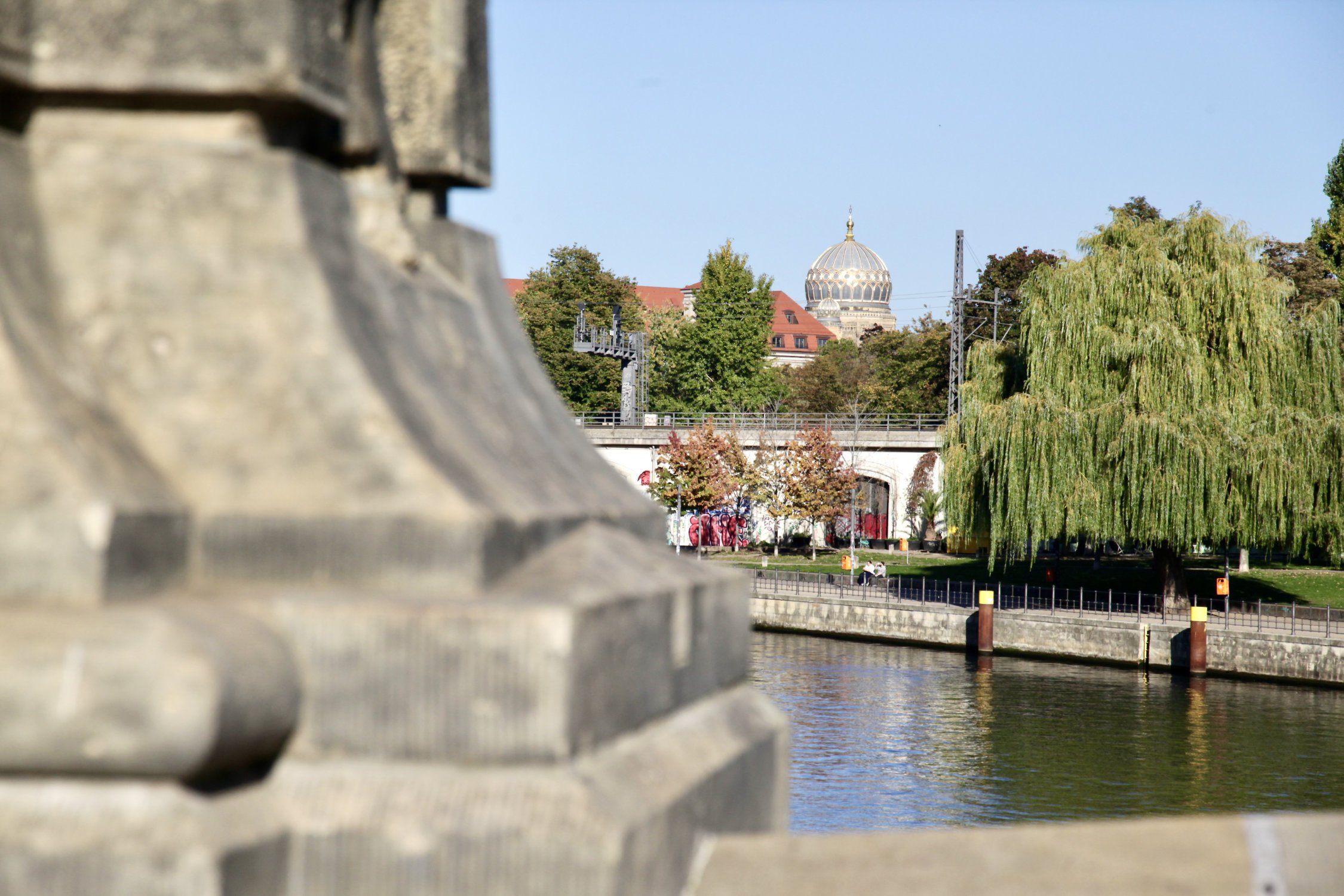21 Amazing Art Galleries & Museums in Berlin
Art lovers are spoiled for choice in Berlin. I’ve picked some classics, some favourites, and some out of the way places for the more adventurous visitors to explore.
The list is in no particular order, it’s just that the numbers make it easier to get through. Enjoy! Get out there and see something cool, something you hate, something inspiring, something beautiful.
Like always, I put everything in a Google map for you. Scroll to the bottom to find it!
One of Berlin’s best secret discoveries: the Boros collection
#1: See the weirdest art you can in a WWII-era bunker at the Boros Collection
Ok, so the list is in “no particular order” except this one. This one is just too cool. The Boros Sammlung is in an old WWII bunker that was used to store tropical fruit in the Cold War before becoming a techno club in the ‘90s. The walls are 2-3 metre-thick solid concrete. The only way to view the Boros collection is on a tour. The tours sell out, so book in advance!
#2: Explore the Prussian King’s collection at the Alte Nationalgalerie
Potentially the most beautiful building on Museum Island (from the outside). The Alte Nationalgalerie was planned by Prussian King Frederick William IV, who didn’t live to see its completion. The king was a big fan of the German romantics. You’ll see the wonderful works of Caspar David Friedrich in the Alte Nationalgalerie.
#3: See the old masters in West Berlin’s Gemäldegalerie
The Gemädegalerie building, 1998, is located in West Berlin’s “Kulturforum”, the West’s answer to Museum Island. Museum Island ended up in East Berlin, so after the Westerners for cut off from the city’s great cultural institutions they set out to make their own! Expect to see the Old Masters in Berlin’s Gemäldegalerie, including works by Caravaggio.
#4: Journey to Potsdam for Monets in Museum Barberini
Ok, I’m cheating a bit because it’s not in Berlin! The Barberini is in the beautiful city of Potsdam, just a little bit southwest of Berlin. View Impressionist paintings by Renoir, Signac, and 38 paintings by Monet.
Getting to Potsdam from Berlin is very easy: S-Bahn trains take you to Potsdam Hauptbahnhof from Berlin every ten minutes. The Barberini is only a short walk across the river from the station.
#5: See the art world’s biggest names at the Gropius Bau
The Gropius Bau, named after its architect, stands out as one of the grandest buildings in the middle of town. It was wrecked during the war, but you’d hardly know to look at it now. The Gropius Bau has no permanent collection. You’ll need to look up whatever’s happening when you’re in town, but it’s really worth it! In the past I’ve seen exhibitions here from Yayoi Kusama, Anish Kapoor, and Ai Weiwei. Not to mention the epic David Bowie is… exhibition!
Hot tip: the book shop is phenomenal.
#6: See the greatest that 20th-Century architecture has to offer at the Neue Nationalgalerie
The Neue Nationalgalerie is a stunning piece of architecture, but I guess it’s a bit much to call it a good place to view art. It’s one of Mies van der Rohe’s final buildings, he envisioned a huge floating roof with glass walls. It’s great but you do rather need walls to hang the art on. As such, expect to be exploring the basement when you visit! The collection includes works by Pablo Picasso, Edvard Munch, Otto Dix, Salvador Dali, and more!
#7: See post-1960 artworks in the Hamburger Bahnhof
Picking up where the Neue Nationalgalerie left off, but in a former train station rather than a glass palace, the Hamburger Bahnhof is home to a permanent post-1960 art collection as well as temporary exhibitions. Named the “Museum of the Present”, the cornerstone of the Hamburger Bahnhof’s permanent collection is based on donations of Erich Marx, a world-famous art collector who died at the age of 99 in 2020. Marx collected (and displayed) works by Joseph Beuys, Anselm Kiefer, Robert Rauschenberg, Cy Twombly, and Andy Warhol.
#8: Street art without the streets: Urban Nation
Since the days of the Wall Berlin has been famous for its graffiti. Once the Wall was gone the graffiti didn’t disappear, in fact as Berlin grew to become the bohemian capital of modern Europe the street art became more creative, provocative, accepted and for want of a better term, good. Despite having an anti-graffiti squad in the police, the state funds the world’s first street art gallery, Urban Nation.
What I really like about Urban Nation is that we can see just how talented street artists are when given time, money, and the assurance that their works won’t be covered up and destroyed in years to come. You can see that there’s more than enough talent among the art world’s outsiders when you visit Urban Nation.
Hot tip: if you’re really inspired they sell spray paint at the front desk!
#9: My Self-Guided Street Art Walk
Does this count as tooting my own horn? I mean, this is my own website, so where else should I toot? I’m tooting:
Street art in Berlin is amazing. You can book me on a Street Art & Alternative Culture Private Tour, or if you’d rather go at your own pace I’ve put together a short walk of Kreuzberg’s most iconic murals you can guide yourself on.
#10: East German splendour: Das Minsk in Potsdam
The Das Minsk Kunsthaus in Potsdam is a must-see for art lovers. The building, built in the ‘70s in East Germany, was one of the restaurants in East Germany. The Minsk stays true to its East German heritage, and shows works created in the GDR.
You’ll have to make a day of it in Potsdam to get out here, but the good news is Potsdam is excellent. You can visit the UNESCO World Heritage Sanssouci Park, or the New Garden, home to the Cecilienhof Palace.
#11: Künstlerhaus Bethanien
The Künstlerhaus Bethanien is an art centre in a former 19th-Century tuberculosis hospital in Kreuzberg. The Künstlerhaus Bethanien is known for its contemporary art exhibitions, which feature both established and emerging artists. It also hosts a variety of cultural events, including concerts, lectures, and workshops. There’s even an outdoor cinema here in the Summer! The residency program offers artists the opportunity to live and work in Berlin for a period of time, allowing them to immerse themselves in the heart of Berlin’s vibrant cultural scene.
Often overlooked, the Bode Museum is achingly beautiful outside & in
#12: The hidden gem of Museum Island: The Bode Museum
One of the most beautiful but least-visited museums on Berlin’s UNESCO World Heritage Museum Island, the Bode Museum is well worth a visit. The museum's Byzantine art collection features an impressive array of religious artifacts, including mosaics, frescoes, and icons. The collection is particularly noteworthy for its collection of early Christian and Byzantine art, which is considered one of the most important in the world.
#13: The best photography gallery in Berlin: CO Berlin
Over in West Berlin in the Amerika Haus, formerly an American cultural centre, is Berlin’s best photography gallery. It’s known for its cutting-edge exhibitions and thought-provoking programming, which often focus on contemporary social and political issues. I’ve been going to CO ever since I moved to Berlin, and I’ve never seen a dud. As a huge photography fan, CO is a constant source of inspiration. I can’t recommend it enough for photography lovers!
Just north of the city centre is the Scheunenviertel, home to Berlin’s best galleries
#14: Explore one of Berlin’s prettiest districts: The Scheunenviertel
OK, I’m cheating a bit here. The Scheunenviertel is a trendy district of central Berlin, and it’s filled with art galleries. Galleries to check out include Galerie Judein, Sprüth Magers, Esther Schipper, and Neugerriemschneider. You could make an afternoon of it: wandering from gallery to gallery, stopping at the pretty cafes along the way, having a brilliant time!
#15: A symbol of division & death turned into a memorial: East Side Gallery
The East Side Gallery is the longest remaining stretch of the Berlin Wall at 1.3 km long. In 1990, after the Wall came down but before German reunification, artists were invited from all over the world to leave their mark on the Berlin Wall. A symbol of division, pain and death was turned into a memorial celebrating hope and change at the end of the Cold War. These days the East Side Gallery serves as a reminder that better times will come.
Expect to see murals covering the entire wall from all sorts of artists. I recommend heading there early as it does tend to get crowded.
My self-guided Kreuzberg Street Art Tour starts here.
#16: Explore West Berlin: CFA Contemporary Fine Arts Berlin
Over in the West, just off the world-famous Ku’damm, is Contemporary Fine Arts Berlin. It’s known for representing a diverse group of international artists and showcasing a wide range of contemporary art forms. CFA has a reputation for being one of the leading contemporary art galleries in Europe, and is a popular destination for art collectors, curators, and art enthusiasts. The gallery regularly hosts exhibitions and events featuring both established and emerging artists.
#17: Concrete heaven: The König Galerie (St. Agnes)
You’ll find the König Galerie inside the former St. Agnes church. The building’s striking concrete interior is as much of a draw as the contemporary artworks on show. As a gallery expect shows to be changing constantly.
#18: Explore modern art at the KW Institute
Founded in a former margarine factory in the early ‘90s, the KW Institute can be found in the heart of Berlin’s gallery district, Auguststrasse. KW is all about the here and now, and is constantly changing. Pop in to see the latest and greatest as you explore one of the most interesting and beautiful part of Berlin.
#19: Relax by the lake at the Liebermann Villa am Wannsee
Located on the side of the beautiful lake, Wannsee, you’ll find Max Liebermann’s summer house. The Liebermann Villa displays the works of Max Liebermann (who’d have thought?!), a leading impressionist.
Liebermann is well known among tour guides for once living next to the Brandenburg Gate. He described his address as “Berlin, first house on the left”. His most famous quote was said as he was watching the Nazis celebrate Hitler becoming chancellor on January 30, 1933: “I can’t eat as much as I’d like to vomit”.
#20: Hidden in plain sight: Schinkel Pavillon (Kronprinzenpalais)
In the centre of Berlin, just across from the German History Museum, is the former crown prince’s palace. The Schinkel Pavillon is all about sculpture and installations. Expect the unexpected!
The building has a fascinating history: during the Weimar period it was used to promote contemporary art. Under the Nazis it was deemed a hive of “degenerate art” and was shut down. In communist East Germany the country’s first dictator, Walter Ulbricht, hosted cocktail parties here.
#21: Berlinische Galerie
I saved one of the best until last! The Berlinische Galerie, just around the corner from the Jewish Museum in Kreuzberg, is home to one of Berlin’s best art museums. Expect both painting and photography, and exhibitions that change regularly.
Show me the map!
Click the button below to see all these great places on a custom Google map, just for you!
Follow me!
Like my stuff? I try to post regularly about the amazing city of Berlin. From self-guided walks to lists of things to do, I want to tell the world all about the great city that I made my home when I moved over from England.
I’m most active on Instagram and Twitter.









